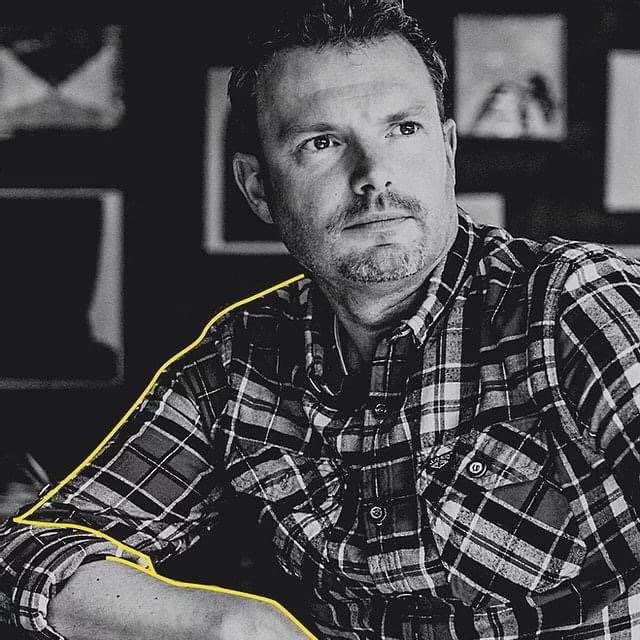-
Posts
4,779 -
Joined
-
Last visited
Content Type
Profiles
Forums
Events
Gallery
Everything posted by JeroenPeters
-
Saw this this morning on Facebook. That looks great! Very convincing. Did you sculpt the pig yourself? Or is it plastic / resin? Cheers, Jeroen
-

SU-25A 1/32 Trumpeter
JeroenPeters replied to Gepard's topic in LSM 1/32 and Larger Aircraft Ready for Inspection
Wow... Lively weathering... Very cool indeed. And convincing. -

1/32 HPH Models Ohka Model 11
JeroenPeters replied to JeroenPeters's topic in LSM 1/35 and Larger Work In Progress
With these resin kits, most work goes into making seams disappear, describing lost panel lines in the progress and some re-riveting. So far all is going well. The fuse is closed. Tail is on. Working on control surfaces and dolly now. Also found an Ultracast yellow (well he is!!) figure in the stash. The figure should look a little something like this: -
What a scheme!! Good show!
-

Sopwith Camel, 1:8 Hasegawa
JeroenPeters replied to TOMc's topic in LSM 1/35 and Larger Work In Progress
Hi Tom, I could be the new Windows update. Try using Google Chrome as a browser. Cheers, Jeroen -
Hi Eelco! Not bad at all! What i do for the wood is: First spray the larger parts in two tones of light brown / Creme with Gunze. When that's totally dry i make small dots for oil (burnt sienna). With a wide flat brush slightly moist with terpentine (rectified) i smear these out until i have the right effect. I only use washes very sparsely on the wood pieces. Hope that helps!
-

finished Zoukei-mura Horten Ho 229
JeroenPeters replied to James H's topic in LSM 1/32 and Larger Aircraft Ready for Inspection
Lovely. So cool... -

1/32 HPH Models Ohka Model 11
JeroenPeters replied to JeroenPeters's topic in LSM 1/35 and Larger Work In Progress
Cheers guys, The fuse is closed. Fine sanding and some describing needed. Wings, tail next. -

Sopwith Camel, 1:8 Hasegawa
JeroenPeters replied to TOMc's topic in LSM 1/35 and Larger Work In Progress
Welcome! Great subject. Just do as i do. Finish it. Display it in the living room. Say it's only for a few days. And keep it there. -
Amazing stuff...
-
Sweet!
- 7 replies
-
- Kitty Hawk
- P39QN
-
(and 3 more)
Tagged with:
-

1/32 HPH Models Ohka Model 11
JeroenPeters replied to JeroenPeters's topic in LSM 1/35 and Larger Work In Progress
Cheers guys! Bought a pretty cool wooden base at the SMC model show last weekend: Working on the seatbelts: -

1/32 HPH Models Ohka Model 11
JeroenPeters replied to JeroenPeters's topic in LSM 1/35 and Larger Work In Progress
just Mr Hobby acrylics. Olive green with some added yellow. followed by a matt coat. AK wash and some dry brushing and silver pencil chipping. -

Savoia Marchetti SM 79 wreckage
JeroenPeters replied to Marcel du Long's topic in LSM 1/35 and Larger Work In Progress
Amazing stuff.... Cant wait to see it up close (tomorrow! -

AIMS Mistel 2
JeroenPeters replied to AIMS's topic in LSM 1/32 and Larger Aircraft Ready for Inspection
Amazing stuff John... Great work.. -

1/32 HPH Models Ohka Model 11
JeroenPeters replied to JeroenPeters's topic in LSM 1/35 and Larger Work In Progress
Cheers guys, First paint is on! -

Wingnut Wings 1:32 Bristol F.2b Fighter (Post War)
JeroenPeters replied to James H's topic in Aircraft Reviews
Another utter detailed and thorough review. Well done matey! -

1/32 HPH Models Ohka Model 11
JeroenPeters replied to JeroenPeters's topic in LSM 1/35 and Larger Work In Progress
Y E S and... Y E S -
Struggling with some loss of mojo, distractions, work, stalled projects, lack of focus AND inspiration, I decided to give the Ohka a whirl. Right off the bat I decided to 3D print the nose charge and display in next to the Ohka, as seen in many pics. Like so: Here's the first render: I found a drawing with measurements. Pretty convenient: And the first parts cleanup: No shrinkage on the fuse:
-
Ohka Model 11 here!
-
Very cool! Looks like the FB group is picking up speed!
-
Kagero Monographs 3D Edition #62 (3062) Arado Ar 234 Blitz Vol.II Publisher: Kagero Written by: Marek J. Murawski and Marek Rys Available here from Kagero for € 21,97 Today I’m taking a look at another unbeatable title from Kagero’s growing Monographs 3D Edition range. It’s the second volume on the Ar234. Where the first volume (click here to read the review on Volume I) focusses mainly on the earlier types and it’s 3D renderings on the cockpit and wheelbays, this volume picks up with the later types and 3D renderings of the engines, exterior details and external storage. It’s the volume that I was waiting for… The book features 115 pages filled with drawings, period photographs, 3D renderings and profiles. As a modeler these series provide me with all the intell I need. As an amateur 3D artist I can only marvel at the amount of work, research and craftmanship that go into the renderings… Introduction As always I’ll take you through the book chapter by chapter, so you’ll know exactly what you’ll get for your money. The smooth heavy paper and soft cover are typical of Kagero’s publications. As is the sense of quality, the in-register printing, and solid design. Inserted behind the cover is a foldable A2 drawing of the later Ar234C-series in scale 1/32. A nice touch, but to his day we don’t have a 1/32 kit of the C-series. But who knows? Fly might decide to widen their 234-line? Or maybe Radu? Next tot his set of drawings, there are two additional A2 sheets with line art taken from the original maintenance books. But more on these later. Other projects The first chapter deals with the various trials and prototypes the Ar234 saw. From bomber, to recon, to nightfighter, to V1 towing vessel. It illustrates the decision-less state of the Luftwaffe in the latter stages of the war. Ar234 in service with reconaissance units The Ar234 is often mistaken for a Luft’46 plane that hardly saw any combat. It did however in quite a few roles. The first was as a fast recon plane, without any built in armament. Speed that was obtained by the two Jumo engines, and RATO packs for extra speed during the volnurable take offs. This chapter gives us a range of witness accounts during operations, adorned with detailed information, like dates and plane codes. One short pilot note describes the encounter with a british Mosquito that flew in the opposite direction. Since the Mosquito had spent all it’s ammo, and the Ar234 recon plane didn’t have any ammo to begin with, all the two pilots could do was wave at eachother. Ar234B bombers in service with Kampfgeschwader 76 The Ar234 bombers were exactly that. Bombers. And like the recon version of the Ar234 they didn’t carry any machine guns. They were able to carry bombs under each engine gondola and one under the fuselage. This wasn’t a widely known fact amongst the allied forces, which caused some allied fighters to flee, upon encountering one of these strange looking jets. Again numerous eye witness accounts, dates and data give us an idea of the bomber missions these planes carried out. Drawings The next chapter is filled with original drawings from the Luftwaffe maintenance manual. Varying from the airframe construction, spars, landing gear, control surfaces, fuel system and cockpit layout. Photographs and drawings from these old manuals can prove pretty useful to a modeller, since they were enhanced and touched up to provide a better sense of detail and construction to the (ground)crew. As a matter of fact I myself used these drawings to scratch build some detail on my own 1/32 Fly model (like the entrance hatch). 3D renderings! And here we go. Starting at page 57 the 3D renderings take center stage. Starting with a beautiful 3D model of the Jumo 004 engine. Great to figure out how to add some wiring. If you plan to open up an engine bay, this is where to start. The renderings show us the attachment to the wings and give us a good sense of colour. These renderings are followed up by some exterior details, like the brake parachute installation, rudder, stabilizer control horns, Peil G6 radar (note not all Ar234B’s carried these!), power sockets in the fuselage, Lotfe 7K bombsight mirror tube (very nice indeed!) and steps and grips. On a bit of a critical note, some details are zoomed in to such extend, that pixilation in the fuselage textures become visible. Like the wire antenna spring at the base, which is soo small that all is forgiven. Details that are invaluable are the external store racks that carried either bombs or fuel tanks. You might also want to take a good look at the Rato packs. The ones’ Fly Models provide are nice and all, but you might want to buy some MDC resin ones’ from Radu’s model. They are more detailed and accurate. This piece did not have flushed rivets and looked medieval in real life with rivets like warts. Sweet stuff all around when at page 92 full renderings take up the pages. Both the Ar234B as the Ar234C get the attention they deserve. All we can hope the C will be covered in glorious 32nd scale. Additional A2 Drawings As said in the intro we get three huge black and white sheets with drawings. Two of them with ww2 era drawings, giving us the detail on gear and cockpit. On the rear we find a full set of plan views of the Ar234C-3 in 1/48 scale. This makes sense, since Revell has this kit in this scale in their range. Perfect when you plan to rivet your model. Whether these are 100% accurate I don’t know, and have no way of checking. I’ll leave that to the rivet-counters. The final set shows plans of the Ar234C-3 in 32nd scale revealing all panel lines and rivets. A nice offering, and I don’t want to say it again, but I will nonetheless: I hope this variant pops up in our scale soon! Verdict I totally love these 3D series and can’t get enough of them. The fact that Kagero deemed it worth to cover the Ar234 in two volumes illustrates their affection for this machine. The super low price of just over 20 euro’s makes me wonder if they can justify all the work that must go in the 3D renderings, but looking at the ever growing list of titles in this series, I guess it does! I can only rate this book a solid 9 out of 10! You plan on building an Ar234 in 72nd, 48th or 32nd scale?? Get both volumes. They’re worth it J Our sincere thanks to Kagero for the review sample. Get your copy here. Jeroen Peters
-

Zoukei-Mura 1:32 - FW Ta-152 H-0
JeroenPeters replied to Pepper-Mint's topic in LSM 1/35 and Larger Work In Progress
Absolutely gorgious...- 17 replies
-
- 1
-

-
- zoukei-mura
- focke wulf
-
(and 1 more)
Tagged with:
-

Post War Bristol Fighter...
JeroenPeters replied to Dave J's topic in LSM 1/32 and Larger Aircraft Ready for Inspection
Love it!

